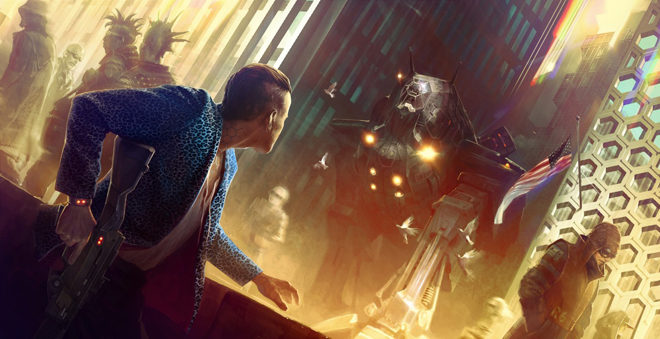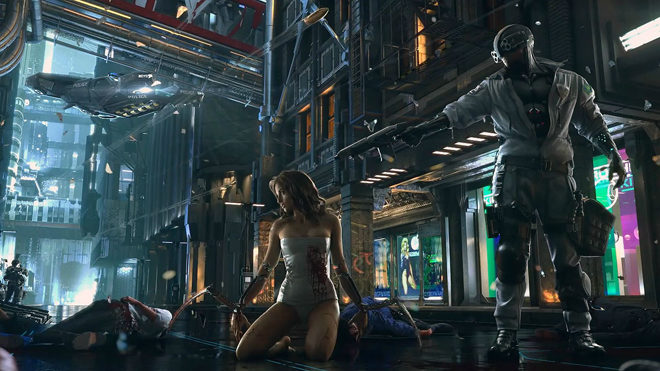Examples of Damage Control in Gaming: From the Witcher to Cyberpunk 2077

Given the amount of praise that was lavished upon CD Projekt Red’s The Witcher 3, to a point where it won the largest amount of Game of the Year 2015 awards by far, it’s no surprise that a large audience excited for the company’s next game: Cyberpunk 2077. But it feels like it’s taking a while, thanks to how early they announced it.
It was confirmed on a special stream shortly before E3 at the end May 2012, almost precisely four years ago — before The Witcher 3’s reveal, incidentally enough. At the time, they explained that it would be an RPG based off the Cyberpunk tabletop role-playing game initially of the same name. That’s “initially” because the first edition originated in the late 80s, at a time when the cyberpunk sci-fi subgenre became a huge phenomenon propelled by works like Ridley Scott’s Blade Runner, and was set in 2013. Few would find a cyberpunk tale set in a year that’s already passed a convincing setting, or even one set in the second edition’s 2020 — the latter of which is the most well-known iteration. That’s why the far-off year of 2077 was chosen for a more realistic setting, which was subsequently added to the title around half a year after it was announced.

That CD Projekt’s was coming with their own unique interpretation of the setting was intriguing, but the small amount of information and existence of nothing but a CG trailer implied it was a long way off. That’s no surprise, given the ambitious plans the development team laid out for themselves early on. Their desire was, and presumably is, for the game to be mature and ambitious in terms of storytelling and gameplay with non-linear progression. It’s a believable goal given what they’ve achieved with the Witcher series, whose stories are pointed to as examples of what mature tales in video games should be. But couple those intentions with the planned existence of character customization and NPCs that will speak multiple real languages, and you can see why this project is taking a while to develop.
In fact, it’s taking so long that people have started reading too much into comments from development staff, and are drawing conclusions that bend the truth. When visual effects artist Jose Teixeira commented about the team’s need to overhaul their internal development technology before beginning full production, some took that to mean the developers had barely even started working on the title after all this time — or hadn’t started at all. It was easy to believe, too, since those large DLC expansions for The Witcher 3 clearly look plenty of the company’s resources to develop. With the final expansion, Blood & Wine, due to arrive on May 30th, the company will have every resource at their disposal for Cyberpunk 2077.
For anyone concerned about how it currently stands, though, Teixeira cleared up some misconceptions regarding its development status. They’ve actually been experimenting with new technology for special effects while the game has been in active development. That’s despite the article linked above (and others) somewhat implying otherwise, which he mentioned was written in a “clickbaity” way. But keep in mind the game is still early in development, and the info which said we won’t see more concrete details until 2017 remains accurate.

Upon mulling over the conditions of its development further, it’s clear this game was announced early to advertise the company’s existence to increase hiring. It’s not completely comparable to the likes of Final Fantasy Versus XIII (which recently celebrated its 10th announcement anniversary) or maybe Kingdom Hearts III. In fact, the future head of CD Project Red’s Krakow branch mentioned how the company is still in the process of hiring more staff. The main development house in Warsaw, Poland will increase to 500, while the Krakow branch will increase to 100. Good thing they’re still raking in profits from The Witcher 3, huh? And that’s despite overall wages being low in Poland.
Regardless of the early announcement, you shouldn’t expect this game to arrive until 2019 at the earliest, but 2020 might be a more realistic estimate. And that may not be too late a year to release a game for current-generation consoles, given Sony and Microsoft’s desires to provide iterative upgrades for the PS4 and XB1. This game sounds more ambitious than any of the Witcher games, and considering the third installment suffered two delays before its May release last year, expect them to run into a few hitches along the way here too. They’ll need time to create a game that can even come close to matching expectations from an audience who found The Witcher 3 to be the best game they played last year, along with possibly creating a multiplayer experience on the side, depending on how it’s implemented. Hopefully they give us a small amount of info after Blood & Wine’s release, even though the biggest info will have to wait until next year.





